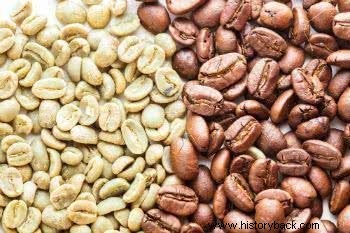The coffee cycle in Brazil It began in 1727, at the beginning of the 18th century, when the first seedlings arrived in the country. For a long time the product was planted for domestic consumption.
Abstract
The culture in small proportions in the north of the country, was expanding towards the southeast, when from 1870 onwards it had its great moment, in the west of São Paulo, in the cities of Campinas and Ribeirão Preto, where it found the “terra roxa”, rich soil. for coffee plantations.

Farms spread, export production grew, immigrants, mainly Italians, came to work on farms.
Later, with free labor and the beginning of mechanization, farmers diversified their activities, investing in trade and in the consumer goods industry. This is how the history of coffee in Brazil is summed up.
Coffee Cycle and Brazilian Industrialization
Production
The coffee cycle was starting to evolve. Despite the existence of small planters, what predominated were the large monoculture farms, characteristic of the colonial economy.
The coffee-exporting coffee industry gradually expanded and soon reached levels of the country's largest export product. Brazil came to export more than 50% of world consumption.
The coffee cycle suffered two declines in the first decades of the 20th century, as a result of international crises.
Manpower
The coffee cycle suffered from a shortage of manpower. The partnership system with the first immigrant settlers failed.
It was not until the 1870s, with salaried work and immigration paid for by the government, that the new system was the solution for farming in São Paulo.
Brazil received 30,000 immigrants in 1886 alone, in the following years this average grew and reached more than 130,000.
The abolition of slavery in 1888 generated a great crisis in the oldest coffee growing areas, Baixada Fluminense and Vale do Paraíba, while in the west of São Paulo the crisis was not felt.
Learn more about the Industrialization process in Brazil.
Coffee Cycle in Vale do Paraíba
The first region of the country to receive coffee seedlings was Pará, in 1727. The seedlings would have been taken by Francisco de Melo Palheta and, very quickly, until 1760, small coffee plantations were already cultivated in Rio de Janeiro.
Along the Paraíba Valley, from Rio de Janeiro to São Paulo, coffee became the main Brazilian export product and reached its apogee in the Second Empire.
The Vale do Paraíba region was considered ideal for cultivation and, therefore, exploration took place on large properties with the support of slave labor.
Learn more about Slavery in Brazil.
Rubber Cycle
The rubber cycle corresponds to the period in the Brazilian economy of extensive practice of the extraction and commercialization of latex for the production of rubber. It comprises two periods, the first from 1879 to 1912 and the second from 1942 to 1945.
The exploitation of latex for rubber production took place mainly in the cities of Manaus, Porto Velho and Belém.
Gold Cycle
The gold cycle is the period that marks the metal as the main activity of Brazil in the colonial period. It started with the decline of sugar exports at the end of the 17th century.
Also know about other economic cycles in Brazil :
- Brazilian Business Cycles
- Sugar Cane Cycle
- Pau-Brasil Cycle
- Cotton Cycle in Brazil
